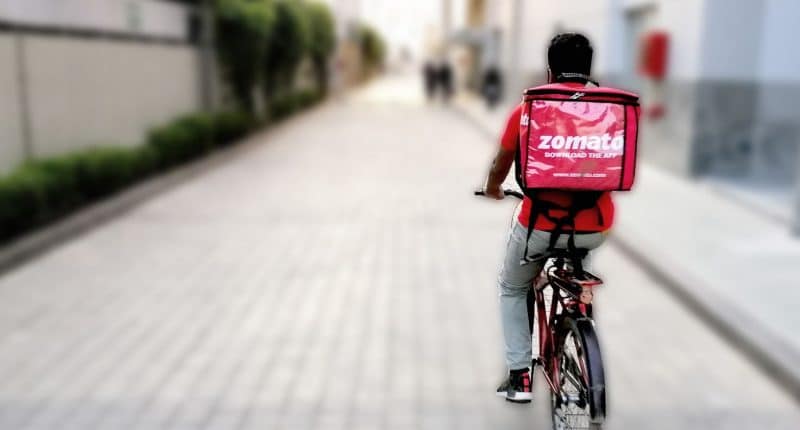Food delivery platform Zomato reported a significant surge in its quarterly profit, fueled by a growth in daily orders and the controversial platform fee hike. In the first quarter of FY25, Zomato’s consolidated net profit soared to ₹253 crore ($30.22 million), a substantial leap from the modest ₹2 crore recorded in the same period last year. Sequentially, the net profit grew by 44.5% from ₹175 crore in the previous quarter as well.
Furthermore, the company’s revenue from operations reached ₹4,206 crore, marking a 74% year-on-year increase from ₹2,416 crore in Q1 FY24. This robust revenue growth was accompanied by a rise in total expenses, which climbed to ₹4,203 crore from ₹2,612 crore a year ago. Despite the increase in expenses, the net profit margins have significantly improved.
Zomato’s Going Out business, focused on reservations and dining out, reported adjusted revenue of ₹95 crore, up from ₹93 crore in the previous quarter and ₹42 crore in the year-ago period. This segment is now operating at a run-rate of over $500 million in annualized GOV and is already profitable. Deepinder Goyal, founder and CEO of Zomato, revealed plans to expand the Going Out offering to include movies, sports ticketing, live performances, shopping, and staycations.
Blinkit, Zomato’s quick commerce vertical, has emerged as a significant contributor to the company’s overall growth. Acquired by Zomato for $568 million in 2022, Blinkit reported a 22% quarter-on-quarter increase in revenue, reaching ₹942 crore in Q1 FY25. The Gross Order Value (GOV) for Blinkit surged by 130% year-on-year and 22% quarter-on-quarter to ₹4,923 crore, highlighting the robust demand for quick commerce services.
Blinkit’s CEO, Albinder Dhindsa, spoke about the company’s focus on expanding product selection and improving efficiency. Over the past eight quarters, the average selection available to customers has increased 4-5 times, with up to 25,000 unique SKUs offered in some locations. Blinkit has diversified beyond traditional grocery segments to include electronics, beauty products, pet care, and toys, aiming to capture a broader market share.
He also outlined ambitious plans for Blinkit, targeting the establishment of 2,000 dark stores by the end of 2026, up from 639 at the end of the June quarter. The majority of these new stores will be located in India’s top 10 cities, with the potential for further expansion into untapped markets. Dhindsa added that the current stores are underutilized, and he expects the GOV per day per store to continue increasing as the store count scales.
Zomato’s food delivery segment also demonstrated strong performance, with adjusted revenue increasing by over 10% quarter-on-quarter to ₹2,256 crore in Q1 FY25. The GOV for food delivery rose from ₹8,439 crore in Q4 FY24 to ₹9,264 crore in Q1 FY25. On a yearly basis, the GOV increased from ₹7,318 crore in Q1 FY24. According to Rakesh Ranjan, CEO of Zomato’s food ordering and delivery business, the food delivery GOV has grown at a compound annual growth rate (CAGR) of 30% between FY20 and FY24, and he expects this growth rate to continue in the coming years.
Zomato’s consolidated adjusted EBITDA increased by ₹287 crore year-on-year to ₹299 crore in Q1 FY25, driven by margin expansion across all business segments. Since turning EBITDA positive last year, the company has maintained a positive trajectory, now achieving an annualized profit of approximately ₹1,200 crore. To add to this, the average monthly transacting customers for Zomato’s food delivery vertical reached 20.3 million, up from 19 million a quarter ago. Despite a slight reduction in contribution margin from 7.5% to 7.3% quarter-on-quarter, Zomato remains on track to achieve a 4-5% adjusted EBITDA margin.
The Tech Portal is published by Blue Box Media Private Limited. Our investors have no influence over our reporting. Read our full Ownership and Funding Disclosure →







